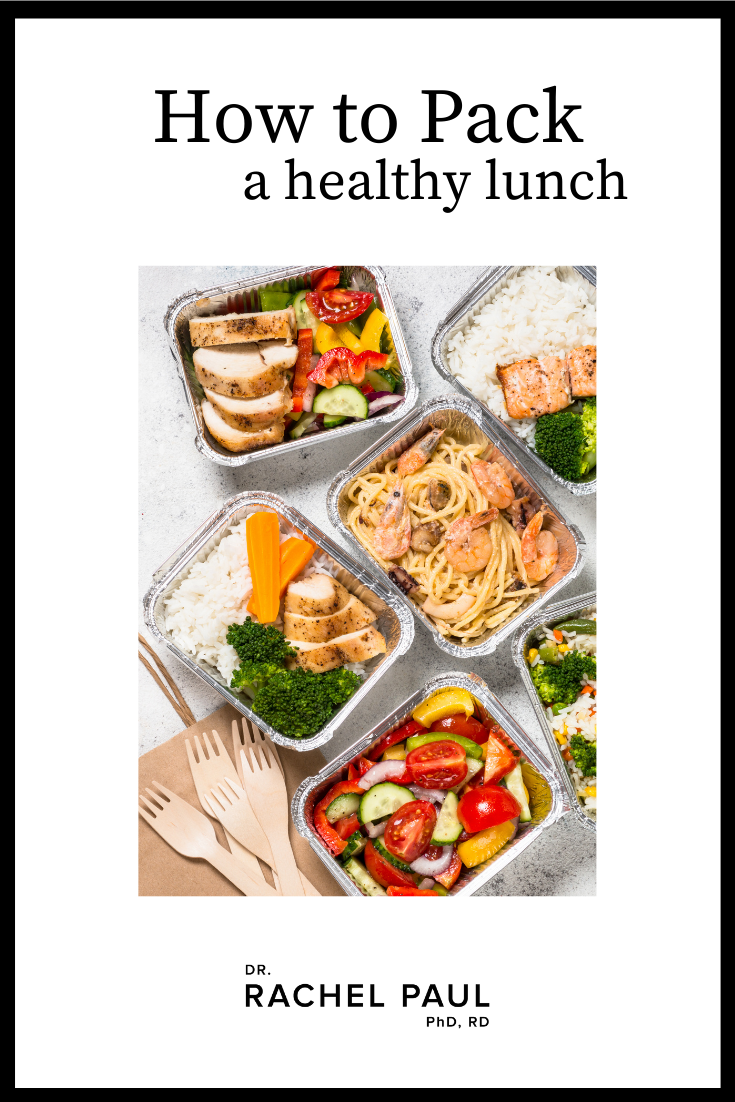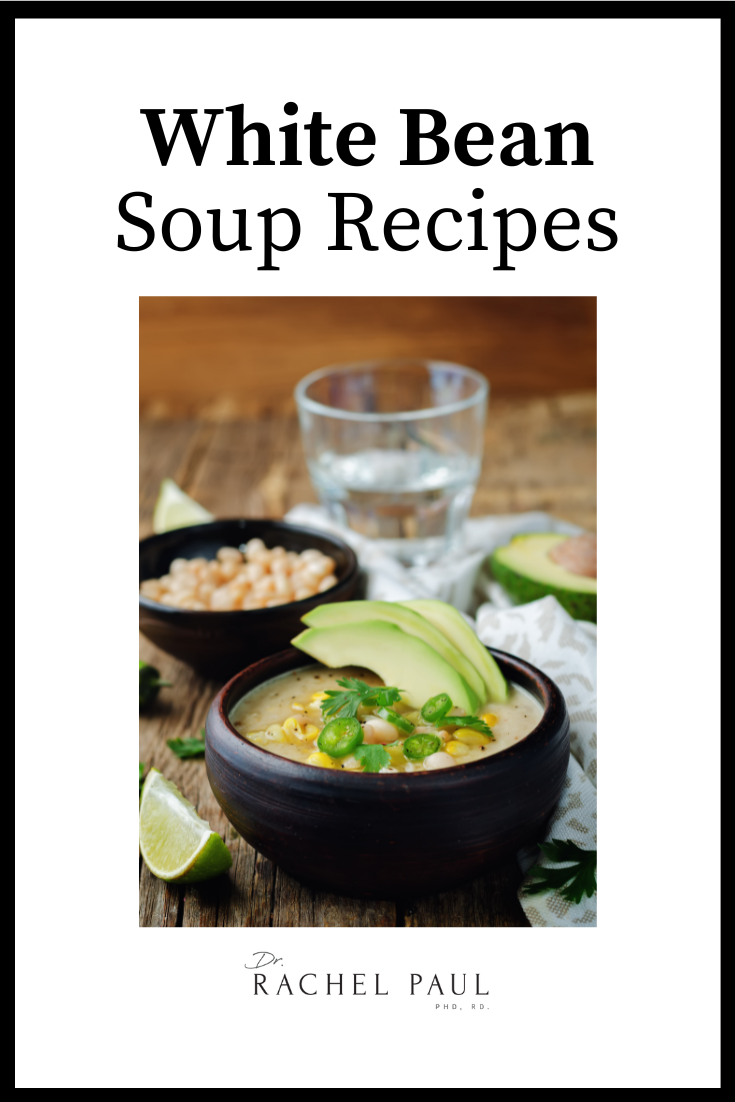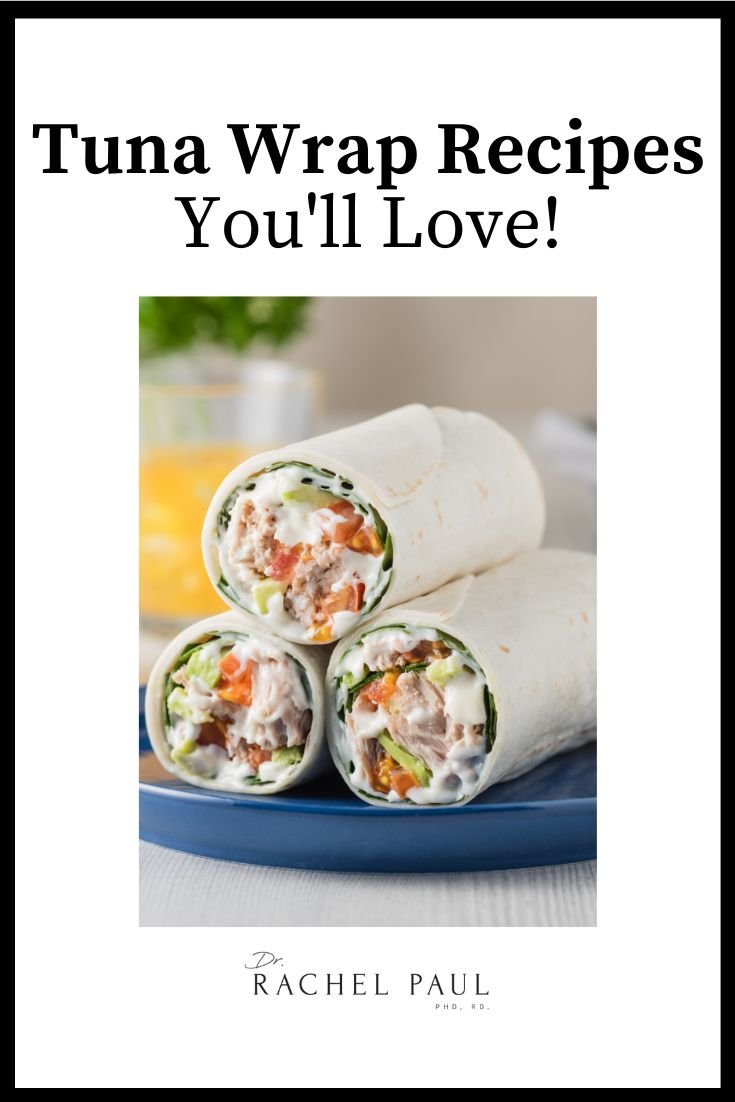Packing your lunch and bringing it to work or school can be useful for so many different things, and it’s much better than buying fast food or buying lunch from somewhere.
It can fuel your day with nutritious foods, it can save you money since it’s much more affordable, you can stick to your meal plan easily (if you have one), and you can stay on track with your healthy eating and weight loss journey easily (if you’re on one).
By packing your lunch, you are controlling exactly what’s going into it, and you can pack a great lunch like an egg salad or grain bowl that will keep you energized and ready to finish work or school.
So, what should a healthy lunch look like? A healthy lunch should have enough protein, complex carbohydrates, healthy fats, fruits, and vegetables. Take advantage of these tips from our registered dietitian.
How To Pack A Healthy Lunch
Here are my best tips for packing healthy lunches, full of nutrients, that are perfect for eating at work or school, and will leave you energized.
Meal Prep
Meal prepping is one of the best tips for packing healthy lunches all the time!
Choose one day of the week (Sunday would probably be the easiest), and prepare food for the whole week, or for a few days. Put it in the fridge or the freezer (depending on what you’re making), and just reheat it when you want to bring it to work.
That way, you’ll have a delicious, healthy and balanced lunch prepared in no time, you won’t skip packing lunch because you didn’t have time to cook that morning, and you’ll know in advance what you’ll be eating.
If you need more help, I have more meal prep tips for you!
Use Leftovers
Leftovers are a lifesaver and once you start using them, you won’t look back!
One thing you can do is purposely make a bigger dinner for the night before, so you know you’ll have some leftovers to turn into tomorrow’s lunch.
Packing a lunch from leftovers is so easy, and you can turn one meal into so many different dishes.
For example, if you had a rice bowl for lunch or dinner, you can put it into a tortilla and turn it into a burrito for your next day’s lunch to bring to work or school.
You can make wraps, sandwiches, bowls, salads, and so much more. Some leftover grilled chicken, leftover grilled veggies, or anything similar – they can be used in so many different ways. You can create a chicken salad (add olive oil for some healthy fats), pair them with brown rice to make a bowl, and you’ll have a healthy and delicious packed lunch.
Just get creative, and you’ll come up with something healthy and delicious!
Have Backups In Your Pantry
It’s always a good idea to have some backup staples in your pantry. If you’re coming up with a last-minute lunch to pack for yourself or your family, there’s nothing worse than realizing you don’t have a basic ingredient you thought you had.
So, having backups for staple ingredients is a great idea. It can save you time and stress!
Plus, when you have the staples, you can even pack a super simple and quick lunch – boiled eggs, apple slices & peanut butter, veggies and hummus (bell peppers, cucumbers, etc.), Greek yogurt, grain breads, or anything similar. You can even pack those as healthy snacks.
Healthy Lunch Ideas To Pack For Work Or School
Now, let’s get into my favorite healthy lunch ideas that you can prepare and pack for work or school!
Broccoli, Chicken & Bacon Sheet Pan
384 calories
Ingredients:
- 3 Uncured bacon, slice – 132 calories
- 2 cups Broccoli – 62 calories
- 5 oz Chicken breast, boneless, skinless, raw – 190 calories
- 1 Garlic salt, dash – 0 calories
- 1 Pepper, dash – 0 calories
Instructions:
- Preheat oven to 400 degrees F
- Line a baking sheet with parchment paper or tin foil & spray with an oil spray.
- Slice chicken into bite sized pieces and cut bacon into bite-sized pieces with kitchen shears.
- Add all ingredients to the baking sheet in a single layer.
- Bake ~40 minutes, mixing contents midway through. If bacon hasn’t cooked through, bake another 5-10 minutes.
- Once cooked, top with seasonings.
- No bacon? Use turkey or soy bacon. No chicken? Use tofu, fish, or beans.
Chopped Chicken Salad
443 calories
Ingredients:
- 2 cups Leafy greens, lettuce, raw – 10 calories
- ½ Tomato, medium – 11 calories
- ¼ Onion, red – 13.75 calories
- 5 oz Chicken thigh, boneless, skinless, raw – 190 calories
- 1 Egg, large – 72 calories
- ¼ cup Cheese, shredded, cheddar – 114 calories
- 1½ slice Artichokes, canned (pieces) – 15 calories
- 1 Tbsp Vinaigrette, light (less than 50 calories per 2 Tbsp) – 17.5 calories
- 1 Salt, dash – 0 calories
- 1 Pepper, dash – 0 calories
Instructions:
- Hard boil egg by placing it in a small pot with water (have water level 1 inch above egg), turning the heat to medium, bringing the pot’s contents to a boil, and boiling for 9 minutes.
- Slice egg into 4 pieces when cooked through.
- Cut chicken, onion, and tomato into small pieces.
- Spray pan with an oil spray. Cook chicken for 8-10 minutes on medium heat, until cooked through.
- Combine all ingredients.
- Top with dressing, salt, and pepper.
- No chicken? Use tofu, fish, or beans. No dairy? Use a dairy-free cheese, avocado, or an oil-based dressing.
Chicken Greek Salad
422 calories
Ingredients:
- ⅓ cup Cheese, crumbled, feta – 133 calories
- 1 Cucumber, small – 32 calories
- 1 cup Tomatoes, grape – 32 calories
- 5 oz Chicken breast, boneless, skinless, raw – 190 calories
- 1 Garlic salt, dash – 0 calories
- 2 Tbsp Vinaigrette, light (less than 50 calories per 2 Tbsp) – 35 calories
- 1 Salt, dash – 0 calories
- 1 Pepper, dash – 0 calories
- 1 Basil, dash – 0 calories
- 1 Oregano, dash – 0 calories
Instructions:
- Cut chicken into bite-sized pieces and season with garlic salt.
- Spray a pan with an oil spray. Cook chicken pieces for 8-9 minutes on medium heat, or until cooked through.
- Combine feta, cucumber (chopped), tomatoes (halved), and chicken.
- Top with dressing and seasonings.
- No chicken? Use tofu or fish. No dairy? Use a dairy-free cheese or avocado.
- Note: I like Trader Joe’s fat free vinaigrette – but Paul Newman, Whole Foods, etc. all have good light dressings
Ground Turkey Bowl with Sweet Potatoes
385 calories
Ingredients:
- 3 oz Ground turkey, 93% lean, raw – 129 calories
- ½ Bell pepper, red – 18.5 calories
- ½ Bell pepper, green – 13.5 calories
- ⅓ cup Cheese, shredded, mozzarella – 112 calories
- 1 Potato, sweet, medium, 5 inches – 112 calories
- 1 Cumin, dash – 0 calories
- 1 tsp Red pepper flakes, dash – 0 calories
- 1 Salt, dash – 0 calories
Instructions:
- Poke holes in baked potato on top & bottom with a fork
- Microwave for 8 minutes, flipping potato over halfway through. Once cooked, slice in to small pieces.
- While potato is cooking, spray pan with an oil spray, cook ground turkey and bell pepper (chopped into medium-sized pieces) on medium heat until cooked through, ~8 minutes
- Add rest of ingredients into the pan and heat through, ~3 minutes
Greek Lunch Box with Hummus
487 calories
Ingredients:
- ¼ cup Hummus – 100 calories
- 1 oz Olives, sliced – 50 calories
- ¼ Onion, red – 13.75 calories
- 1 Tomato, medium – 22 calories
- ½ Cucumber, small – 16 calories
- ⅓ cup Cheese, crumbled, feta – 133 calories
- 4 oz Chicken breast, boneless, skinless, raw – 152 calories
- 1 Salt, dash – 0 calories
- 1 Oregano, dash – 0 calories
Instructions:
- Cut chicken into bite-sized pieces, mix with seasonings.
- Spray a pan with an oil spray, cook chicken for ~10 minutes, until cooked through. Let cool before adding to boxes.
- Arrange all ingredients in boxes.
- Store hummus in a separate container.
- Dairy free? Use a dairy free cheese or avocado. Vegetarian? Add an additional serving of feta or use tofu.
Whole Foods Grocery Shopping Tips
What are whole foods
In case you’re not even entirely sure what whole foods are, whole foods are foods as close as possible to their natural states. They don’t contain added sugar, chemicals, flavorings, anything artificial. They’re foods that haven’t been processed.
How to choose foods
When it comes to choosing foods for each category, there are some tips & tricks you should know.
So, let’s get into the tips.
-
Get organic dairy products (if possible from pasture-raised animals), and not processed products (such as processed cheeses)
-
Get pasture-raised eggs
-
Meat raised with no antibiotics or hormones
-
Get clean products with no added sugars
Buy organic foods
Whenever it’s possible, buy organic foods.
Check the label
When you’re buying stuff like peanut butter, that’s slightly processed (typically whole foods aren’t processed at all, but many people count the very slightly processed foods as whole foods), make sure you check the label.
For example, peanut butter can be made with just blended peanuts. Therefore, it’s mostly considered a whole food. However, some brands put in additional and artificial things, which means those brands wouldn’t be considered whole foods.
So, make sure you check the label for everything.
Eat lots of fruits & veggies
The purest form of whole foods are fruits and veggies. Some people decide to be fully plant-based when they decide to eat whole foods (so no meat and dairy) just because of their personal preference, and some people decide to include meat and dairy when it’s whole foods.
But whatever you decide, you should eat lots of vegetables and fruits, whether it’s fresh produce, or frozen fruits & veggies.
When it’s frozen, just check the label to see nothing was added to it (but it shouldn’t be), and you’re good.
What not to eat
Here’s what to avoid when shopping for whole foods:
-
Packaged foods: chips, frozen meals, snack bars, etc.
-
Sweets: chocolate, candy, etc.
-
Added sugar in anything
-
Pre-made foods: pre-made sauces, etc.
-
Processed foods: processed cheeses, deli meat, bacon, etc.
-
Fast food: pizza, burgers, fries, etc.
-
Refined grains: white rice, white flour, white bread, white pasta, etc.
Where to shop
You can find whole foods in any grocery store (Trader Joe’s, Whole Foods, etc.). You just need to know what is considered a whole food, and you need to check the label for everything.
A great place to shop for fruits and veggies is a farmer’s market. They usually have better produce than grocery stores, since the farmers are growing them themselves, with nothing sprayed on the fruits & veggies (usually).
Examples of whole food recipes
If you’re struggling to find some recipe ideas with whole foods, here are a few ideas.
Breakfast idea:
Eggs in Peppers
163 calories
Ingredients:
-
2 Egg, large – 144 calories
-
½ Bell pepper, red – 18.5 calories
-
1 Salt, dash – 0 calories
-
1 Pepper, dash – 0 calories
Instructions:
-
Slice bell pepper into rings (2, have the rest of the pepper on the side or save for a snack!)
-
Spray pan with an oil spray & add in the 2 pepper rings
-
Crack 1 egg into each ring
-
Cover with lid & cook through to desired egg consistency
Snack idea:
1 Apple & 1/4 Cup Nuts
FRUIT
277 calories
Ingredients:
-
1 Apple, small – 77 calories
-
¼ cup Nuts – 200 calories
Instructions:
-
No nuts? Use seeds.
Lunch idea:
Fajita Chicken Sheet Pan
369 calories
Ingredients:
-
½ cup Asparagus spears, chopped – 13.5 calories
-
½ Onion, yellow – 27.5 calories
-
½ Bell pepper, red – 18.5 calories
-
6 oz Chicken breast, boneless, skinless, raw – 190 calories
-
1 Cumin, dash – 0 calories
-
½ tsp Garlic powder – 0 calories
-
½ tsp Chili seasoning – 0 calories
-
1 Salt, dash – 0 calories
-
1 Tbsp Olive oil (Tbsp) – 119 calories
Instructions:
-
Preheat oven to 400 degrees
-
Line a baking sheet with parchment paper & spray it with an oil spray
-
Thinly slice onion and bell pepper
-
Cut off hard ends of asparagus and discard
-
In a bowl, add all seasonings
-
Add chicken and veggies to the bowl, mix around so everything is coated. Add larger quantities of the seasonings if you like
-
Add veggies and chicken to sheet pan, bake for 30 minutes, flip chicken over at 15 minutes
-
Arrange all foods on a plate, top with oil and more seasonings.
Dinner idea:
Garlic Salmon and Broccoli
268 calories
Ingredients:
-
2 cups Broccoli – 62 calories
-
4 oz Salmon fillet – 200 calories
-
1 tsp Sesame seeds (tsp) – 6 calories
-
1 Garlic salt, dash – 0 calories
-
2 tsp Garlic, minced (tsp) – 0 calories
-
2 slice Lemon, slice – 0 calories
Instructions:
-
Preheat oven to 400 degrees F.
-
Line baking sheet with parchment paper or tin foil.
-
In a bowl, mix raw broccoli with minced garlic.
-
Add salmon and broccoli to baking sheet. Top with garlic salt.
-
Bake salmon & broccoli for 20 minutes, or until salmon flakes easily.
-
Squeeze lemon on top of broccoli & salmon once cooked.







